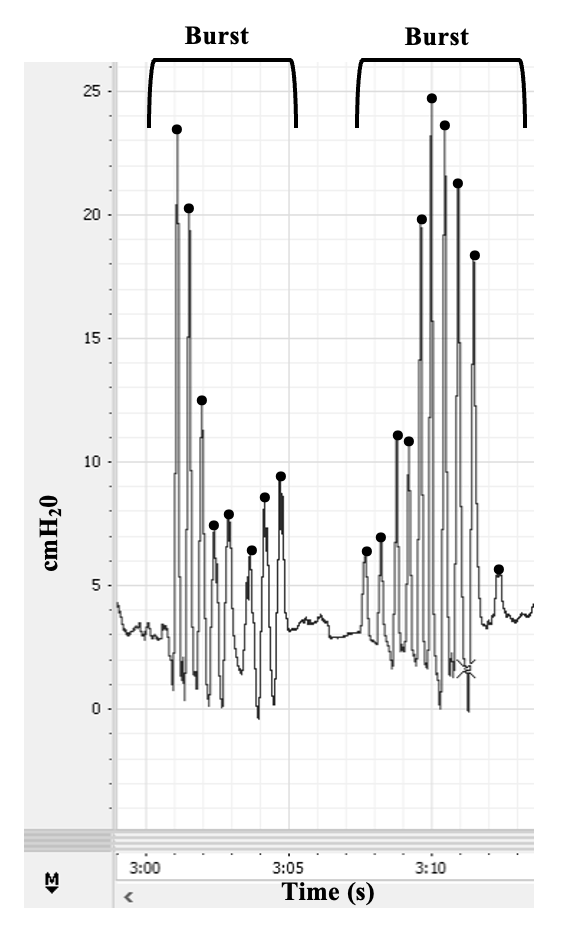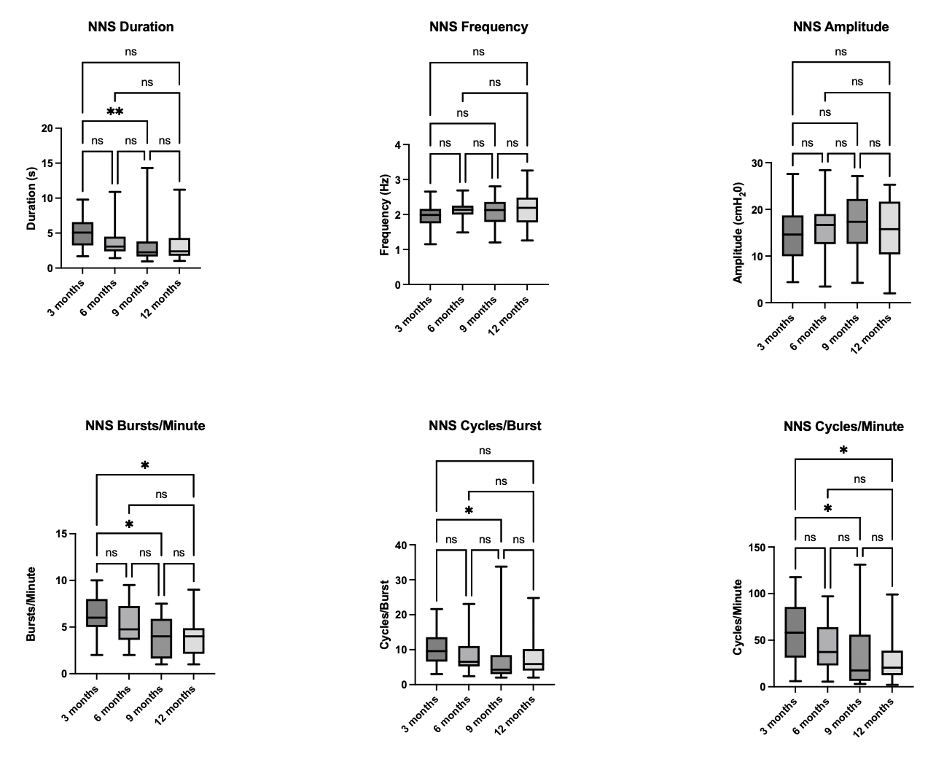Neonatal Neurology 6: Neurodevelopment
Session: Neonatal Neurology 6: Neurodevelopment
686 - Dynamic Changes in Infant Non-Nutritive Sucking Patterns: A Longitudinal Analysis Across the First Year of Life
Sunday, April 27, 2025
8:30am - 10:45am HST
Publication Number: 686.4682
Alaina Martens, Northeastern University, Quincy, MA, United States; Natalie Peterman, Northeastern University, Boston, MA, United States; Emily Zimmerman, Northeastern University, Boston, MA, United States

Alaina Martens, PhD, CCC-SLP (she/her/hers)
Postdoctoral Research Associate
Northeastern University
Quincy, Massachusetts, United States
Presenting Author(s)
Background: Non-nutritive suck (NNS; sucking without nutrient delivery) is one of the first oromotor behaviors infants display and has been associated with future neurodevelopmental outcomes. Prior research has characterized NNS in infants at 3 and 12 months of age and found that as infants age, their suck bursts become shorter and stronger. However, there remains a gap in knowledge as to when this pattern shifts in the first year of life.
Objective: We aimed to examine changes in infant NNS outcomes across four timepoints in the first year of life. We hypothesized that a significant shift in NNS would occur around six months of age as infants are introduced to solid foods and that over time NNS would decrease in length and increase in strength.
Design/Methods: Twenty full-term infants participated in this prospective, longitudinal, ongoing, study with repeated measures at 3, 6, 9, and 12 months of age. Infants sucked on our custom pacifier containing a pressure transducer for ~5 minutes. NNS outcomes included: burst duration (s), frequency (Hz), amplitude (Cmh20), bursts/min, cycles/burst, and cycles/min, figure 1. For statistical analysis, repeated measures ANOVA (RM ANOVA) was employed using NNS summary statistics.
Results: RM ANOVA revealed a significant effect of age on NNS outcomes with the largest difference evident between the 3- and 9-month timepoints. NNS duration (p = 0.01), bursts/min (p = 0.01), cycles/burst (p = 0.01), and cycles/min (p = . 0.02) significantly decreased at the 9-month timepoint indicating that as infants age, they exhibit a shorter NNS duration with fewer bursts and cycles, figure 2. There were no significant effects of age on NNS frequency and amplitude (suck strength) at any timepoint.
Conclusion(s): Results indicated significant NNS age-related changes with the most robust shift occurring between 6 and 9 months with NNS characterized by fewer bursts and cycles. Between 6 and 9 months of age, infants are starting to eat more solid food and rely less on non-nutritive and nutritive sucking for soothing and nourishment. These findings elucidate how and when NNS outcomes change, which is critical to establish feeding therapy targets for those with pediatric feeding disorders. This study highlights the dynamic nature of NNS during infancy and underscores the need for further assessment and exploration of its developmental trajectory. This is an ongoing study and next steps along this line of inquiry included determining how these shifts in NNS relate to oral feeding success and subsequent neurodevelopment.
Figure 1. NNS Waveform
 An example of an infant’s NNS waveform in LabChart. The x-axis is time (s) and the y-axis is amplitude (cmH20). This infant has two NNS bursts with 8 cycles (black dots) in burst 1 and 10 cycles in burst 2.
An example of an infant’s NNS waveform in LabChart. The x-axis is time (s) and the y-axis is amplitude (cmH20). This infant has two NNS bursts with 8 cycles (black dots) in burst 1 and 10 cycles in burst 2. Figure 2. Results
 Boxplots of NNS distributions comparing 3, 6, 9, 12 month timepoints. *Indicates a significant difference in means.
Boxplots of NNS distributions comparing 3, 6, 9, 12 month timepoints. *Indicates a significant difference in means.
